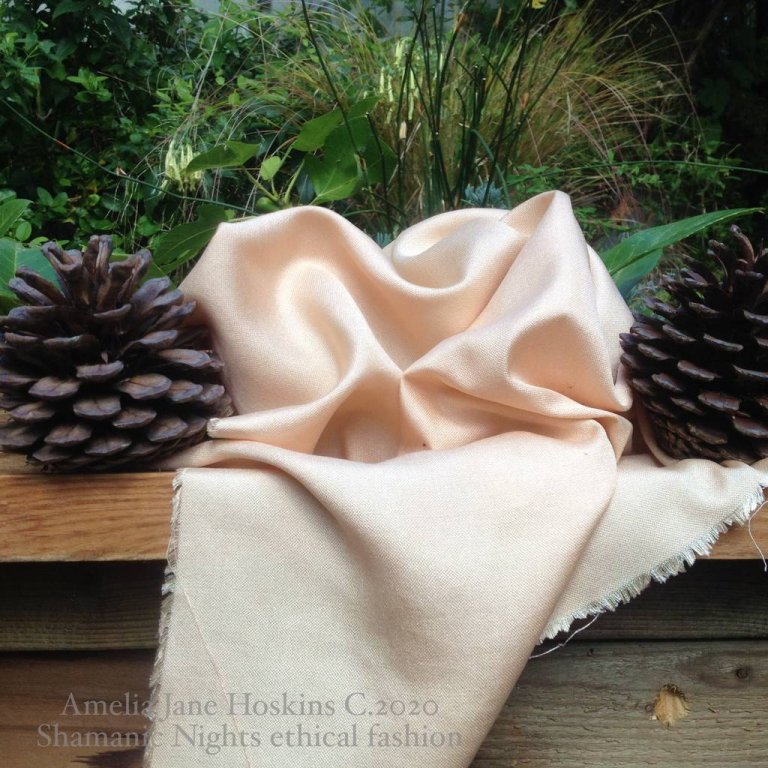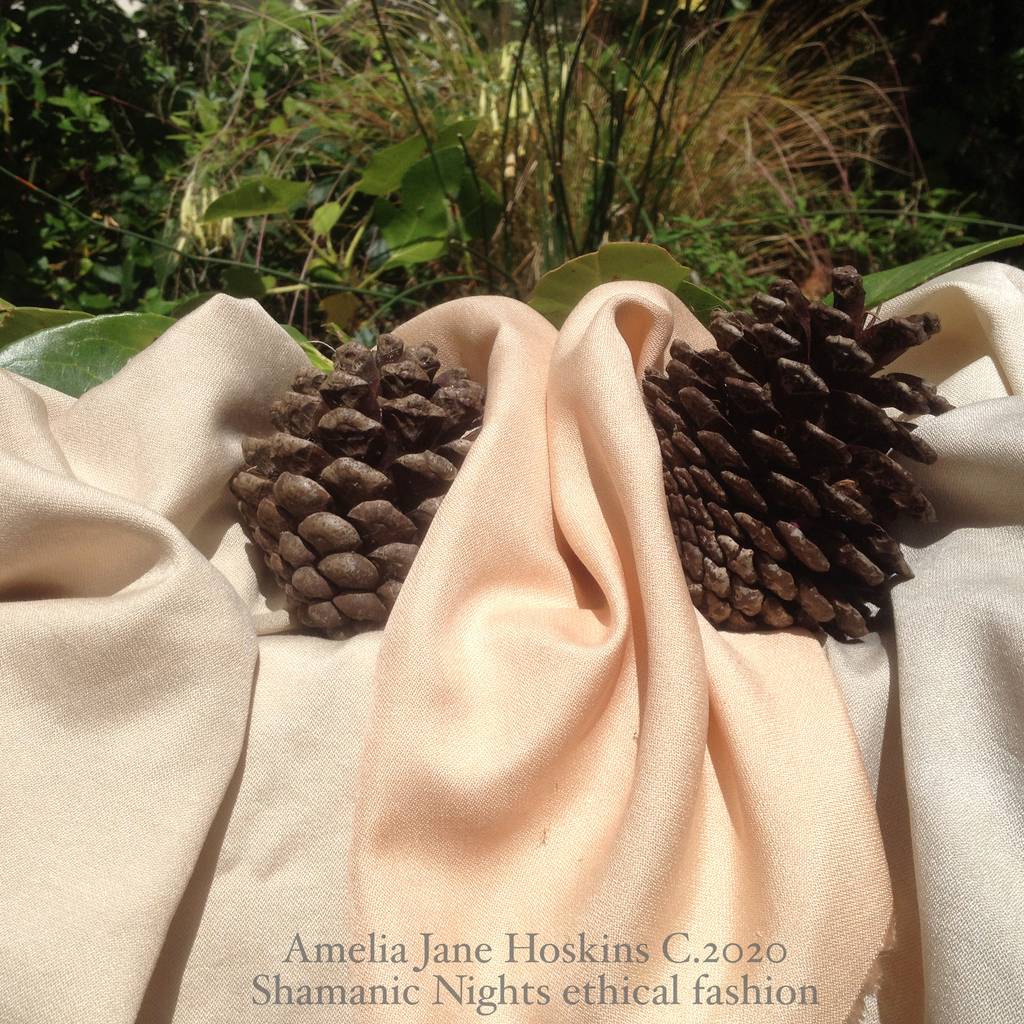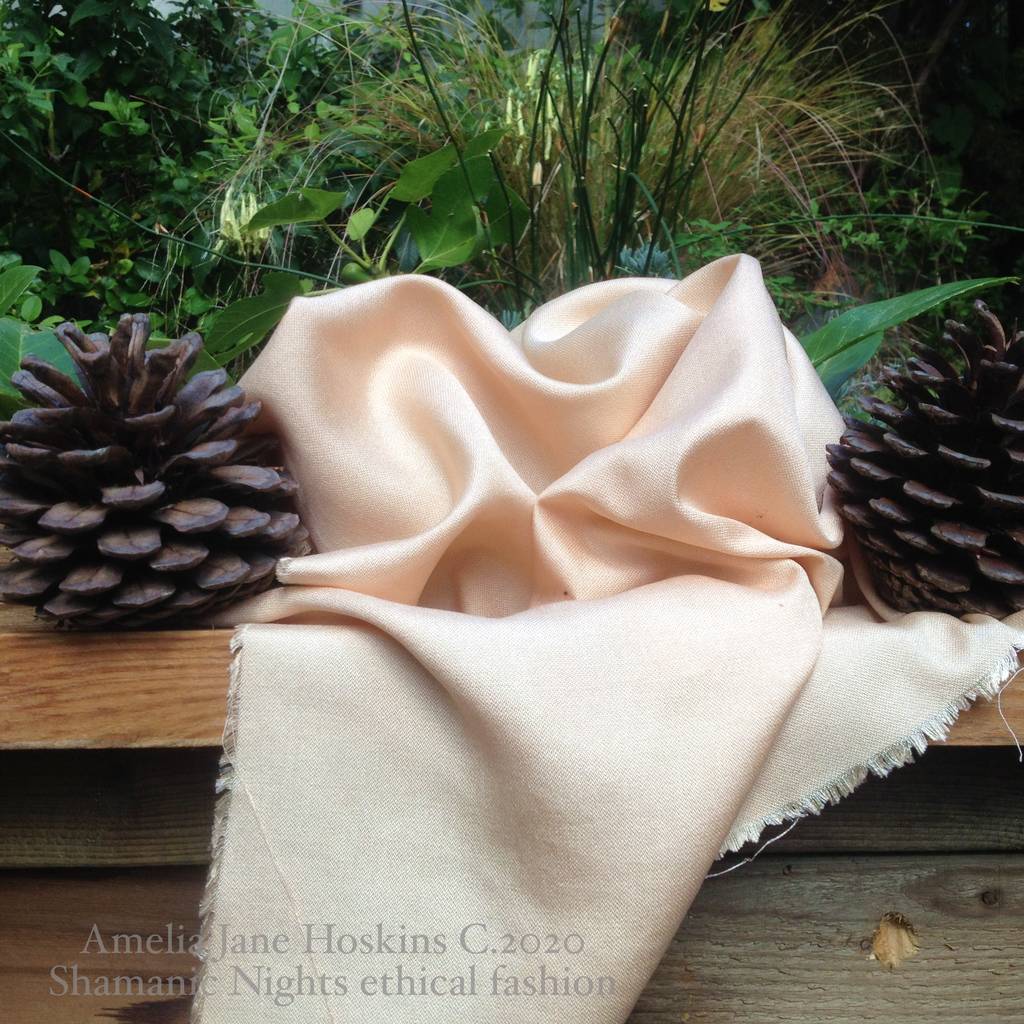Bedstraw is found in waste ground and near the coast. The reddish roots are used for dyeing; family is Madder (Rubiaceae) a well known red dye. The plant I found is growing along the Tarka Trail cycle path (ex rail track) opposite the small town of Bideford, N. Devon. Not easy to pull out the roots, and many were left for next year's growth. This seemed a particularly large and well established plant. Bedstraw has many herbal uses.
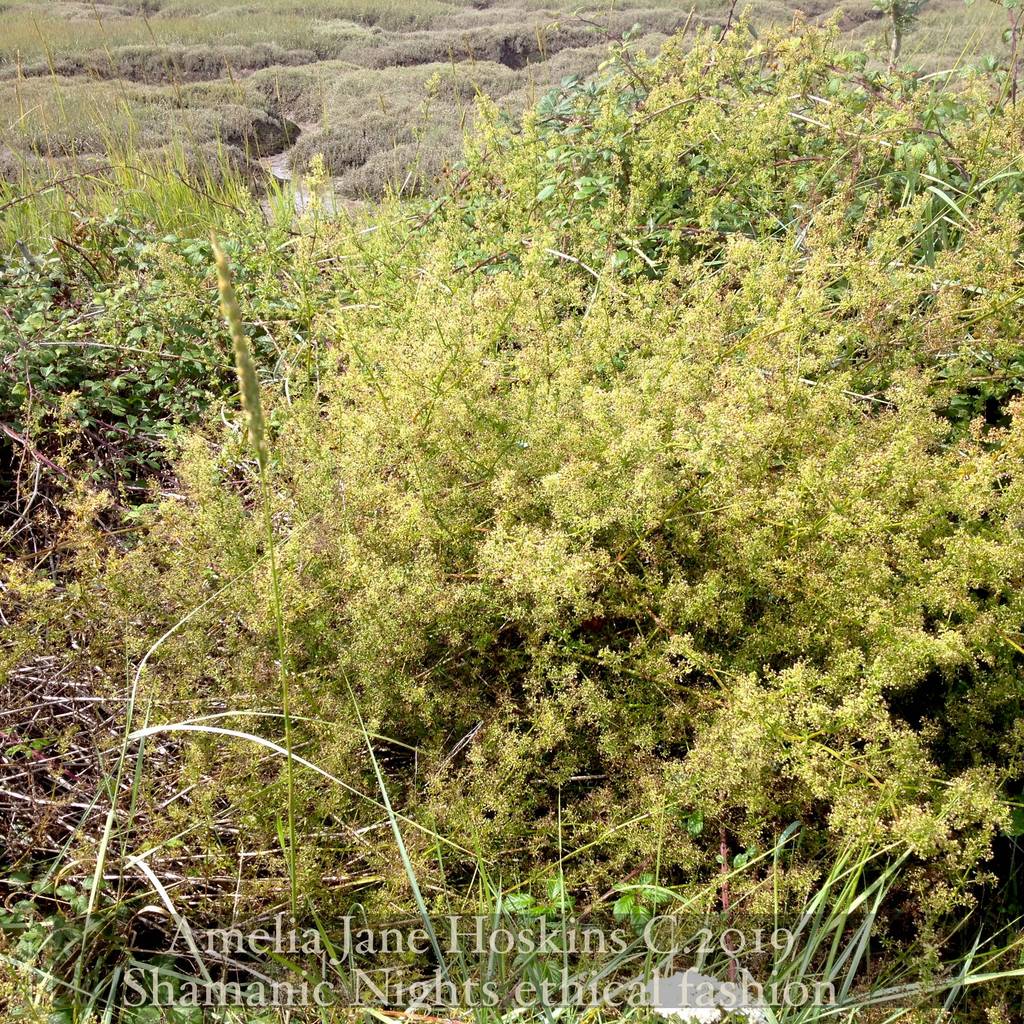
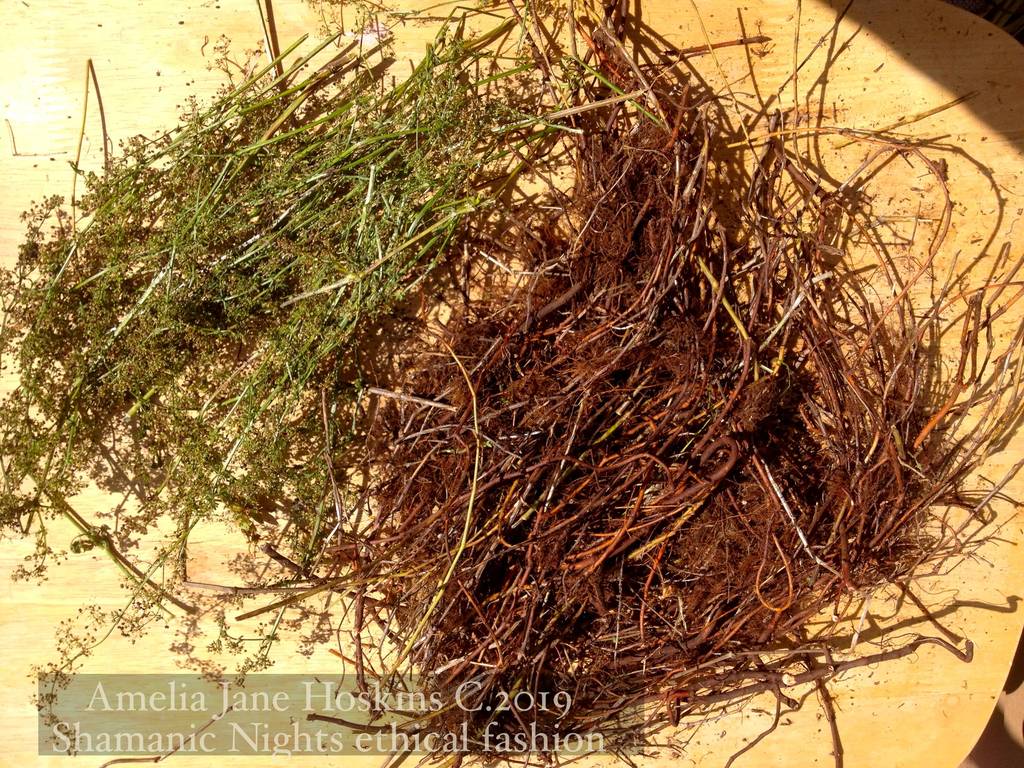
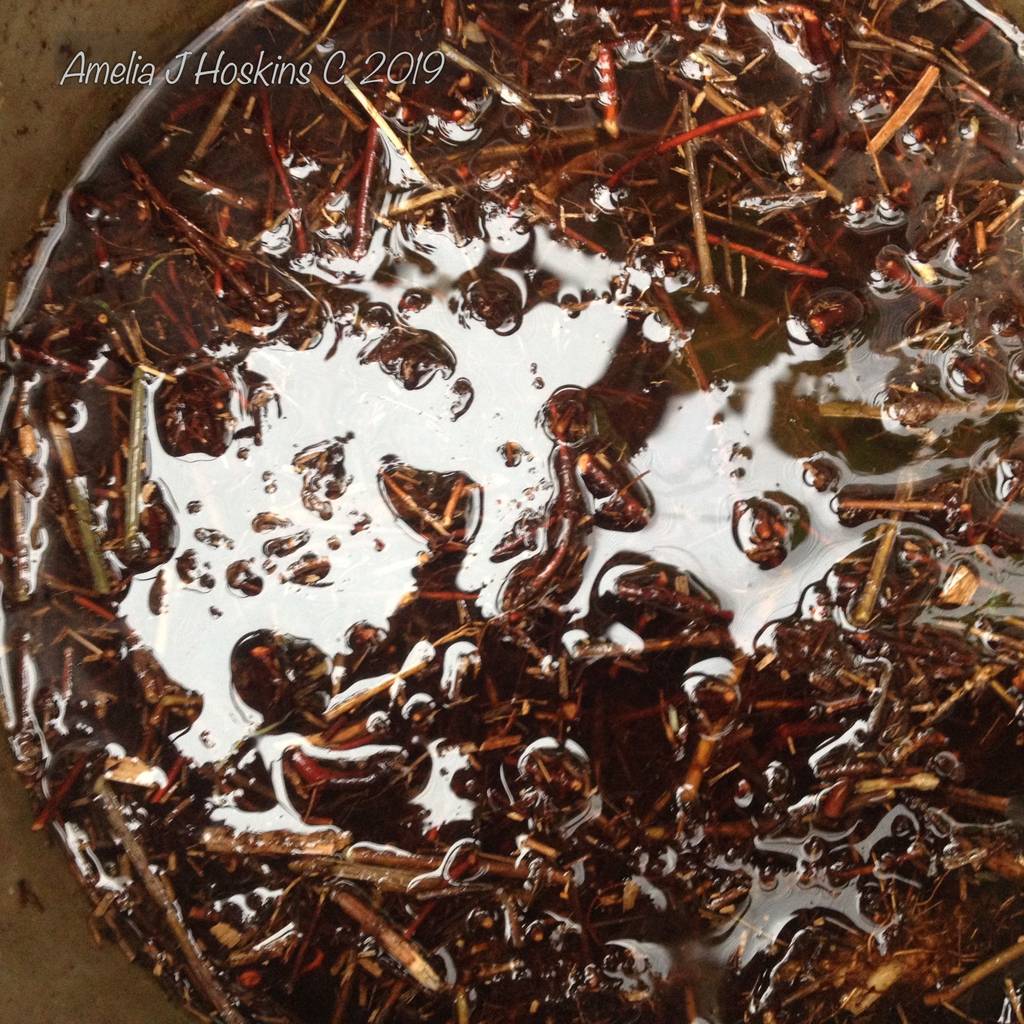
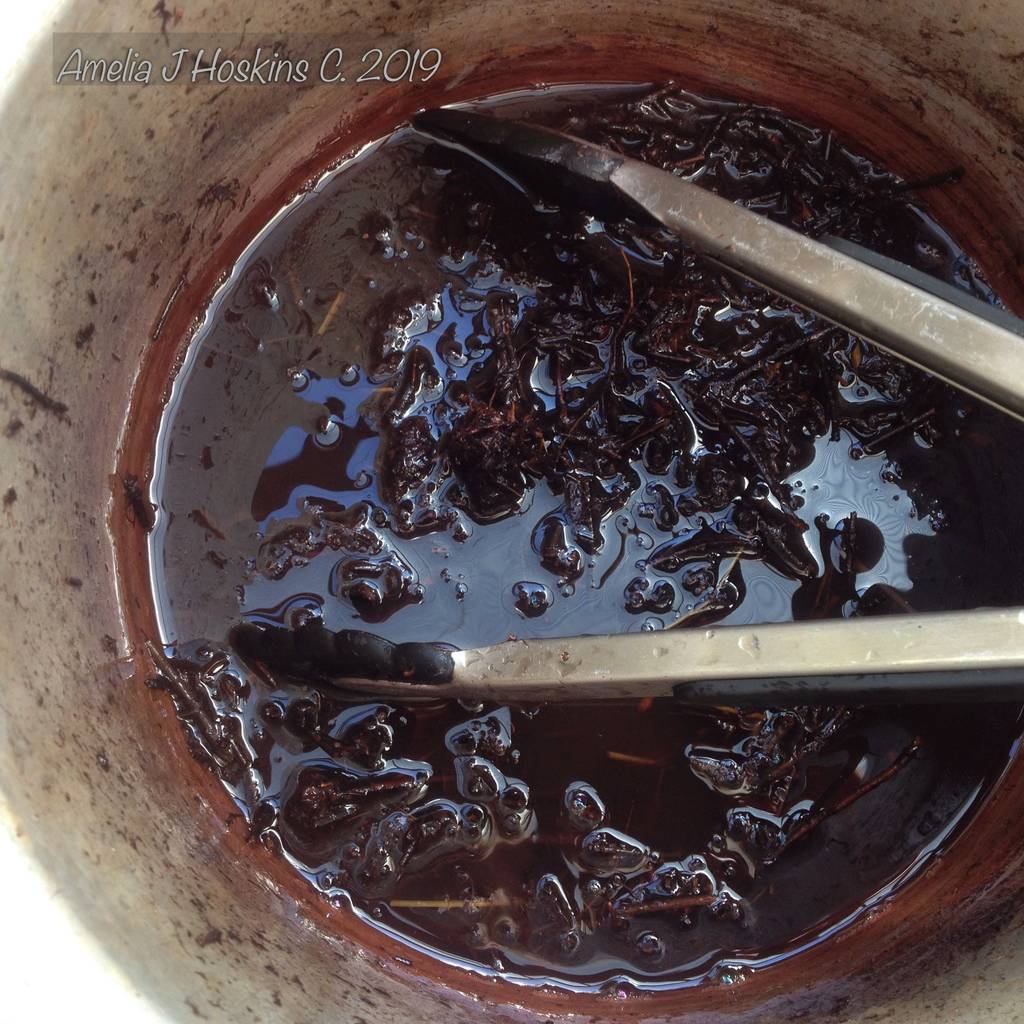
The roots have a strong pigment towards red-brown. As the dye bath reduced, I noticed a good pinky red forming on the sides of the pan; possibly due to being aluminium; it may have absorbed the pink element of 'red', giving way to a more browny-peachy colour, even so a very bright peach from the strongest 1st soaking.
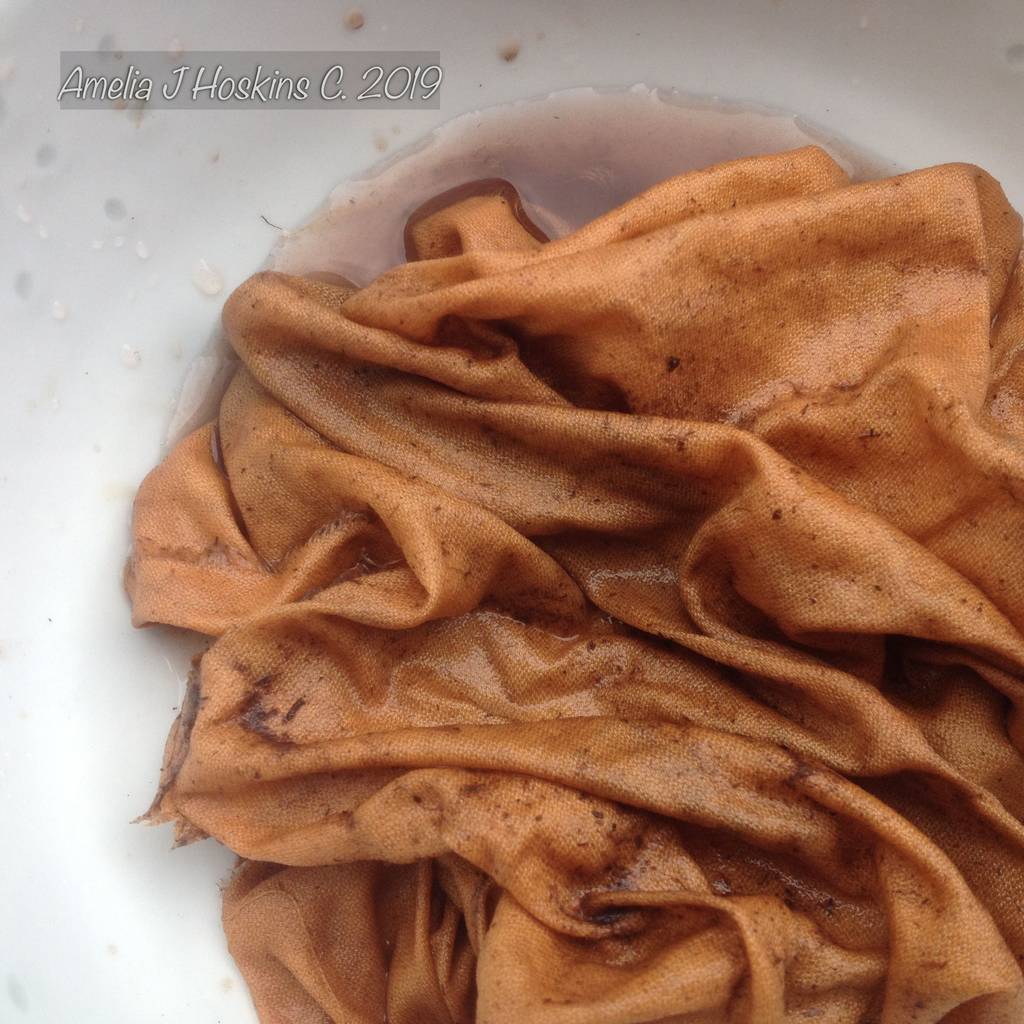
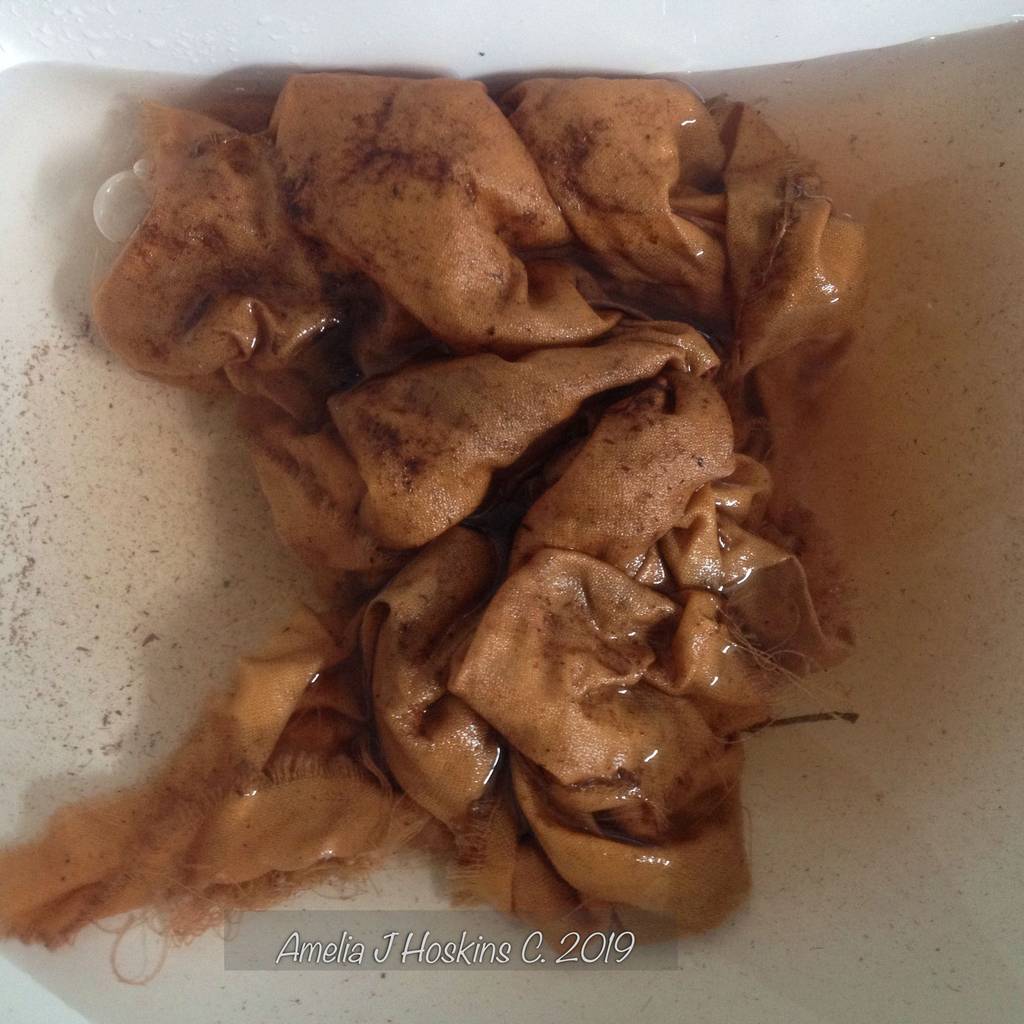
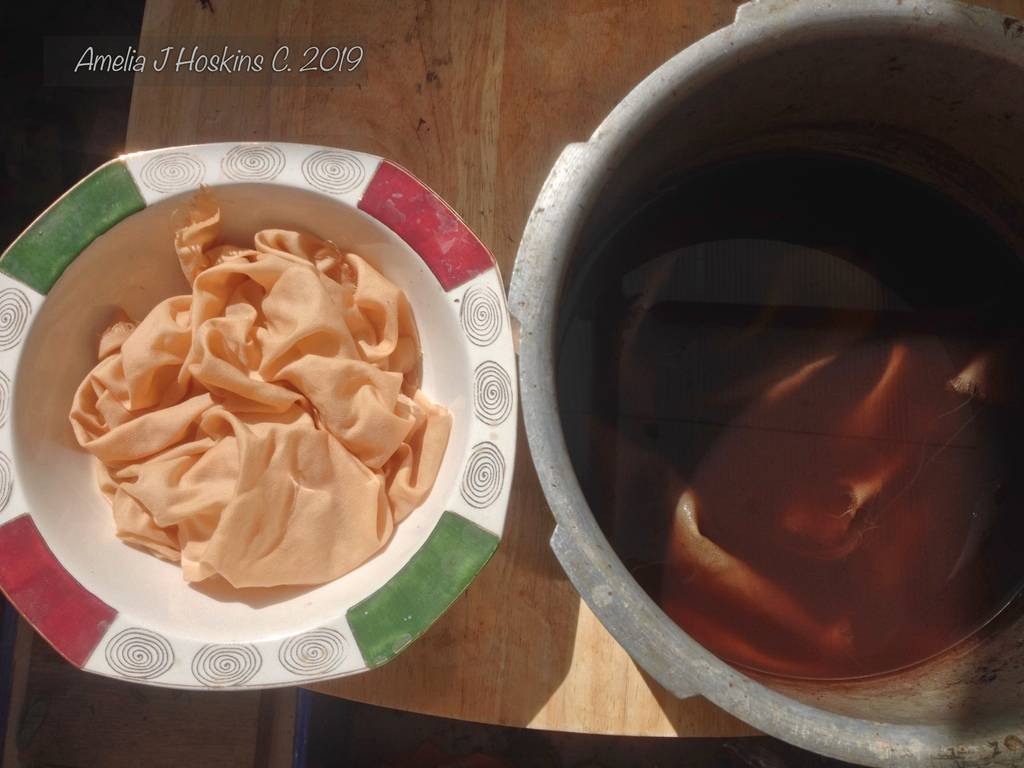
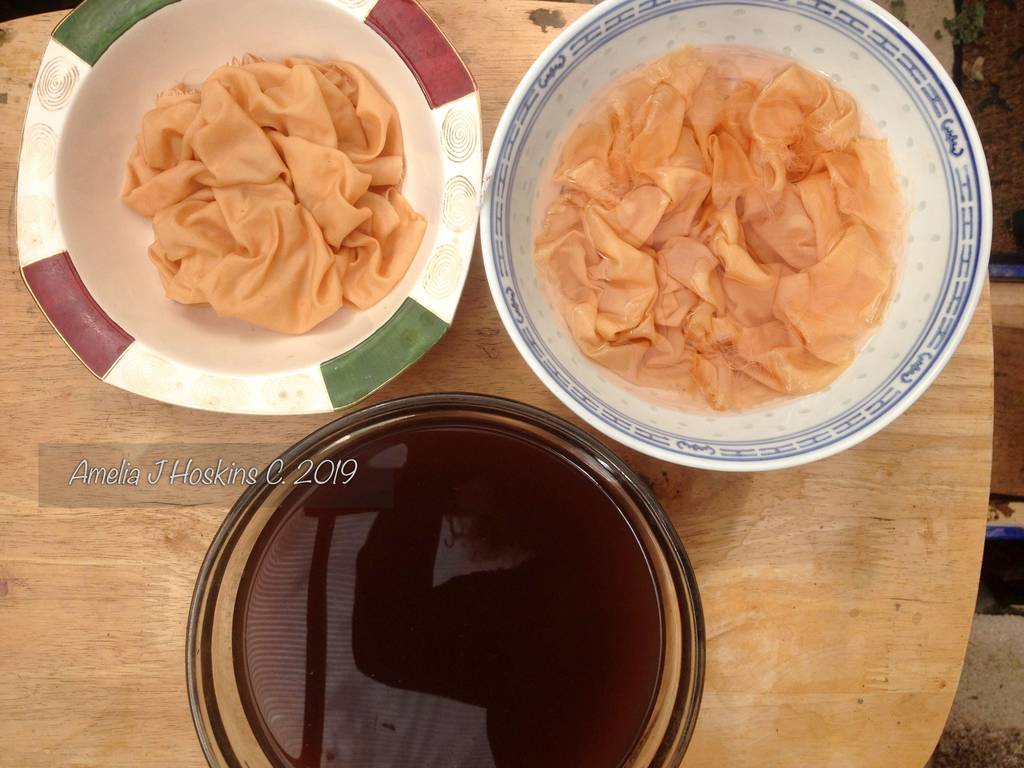
Ladies Bedstraw - Amazingly bright ruddy peach silk after removal from dye bath and rinsing
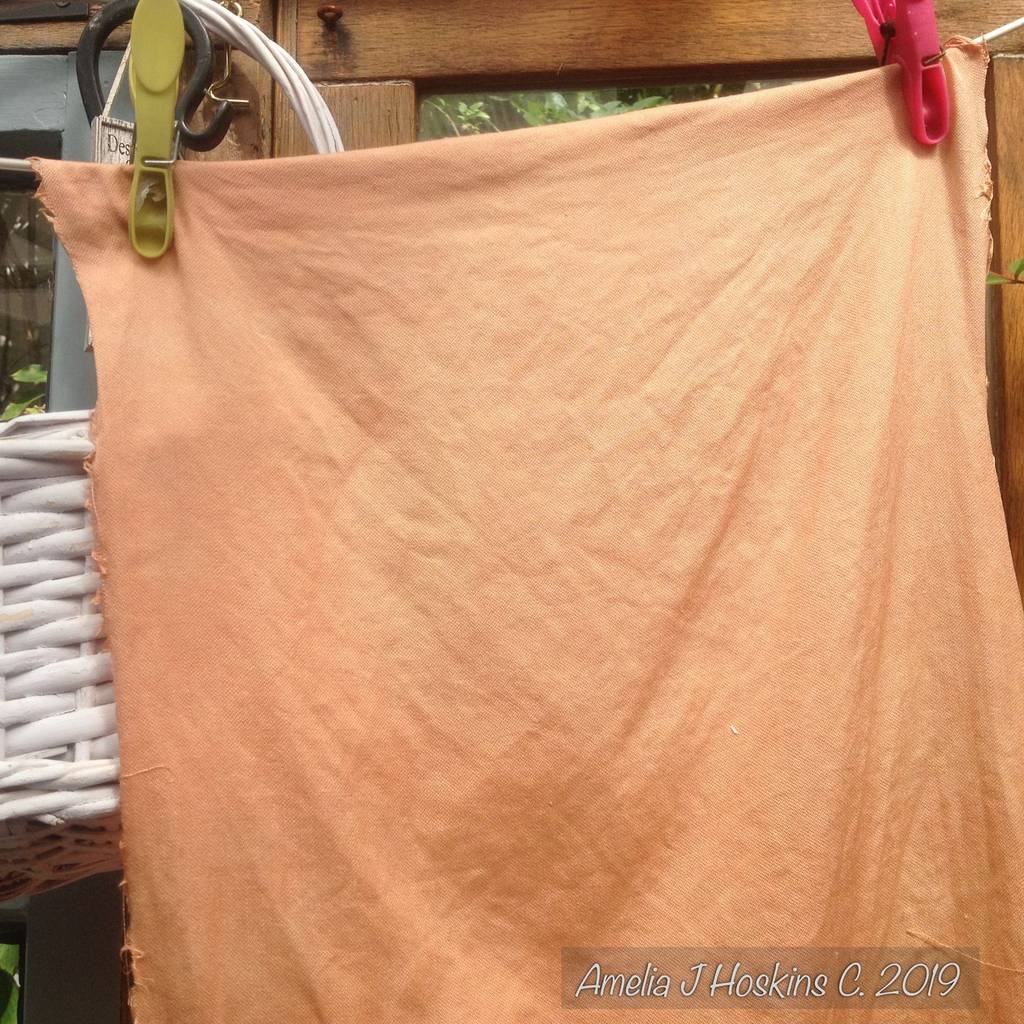
1st Bedstraw dyed silk sample has been pre-mordanted in Alum for a day before putting to soak in hand hot dye bath. Although the roots were boiled up to release dye, boiling Ahimsa silk roughens it, so it was immersed in only a 'hot' bath. Plant dye is often absorbed with no heating.
2nd Bedstraw dyed silk sample in cooled dye bath which was reheated with bedstraw to obtain more dyestuff. Red dye liquid is drained off into glass bowl to soak silk. Steam iron while still damp to help smooth out creases, or don't squeeze out all water. Paler colours can be obtained by adding to remaining dye bath while some pigment remains unabsorbed.
Lady's Bedstraw Ahimsa silk results: 1st soak strong peach - 2nd soak light peach.
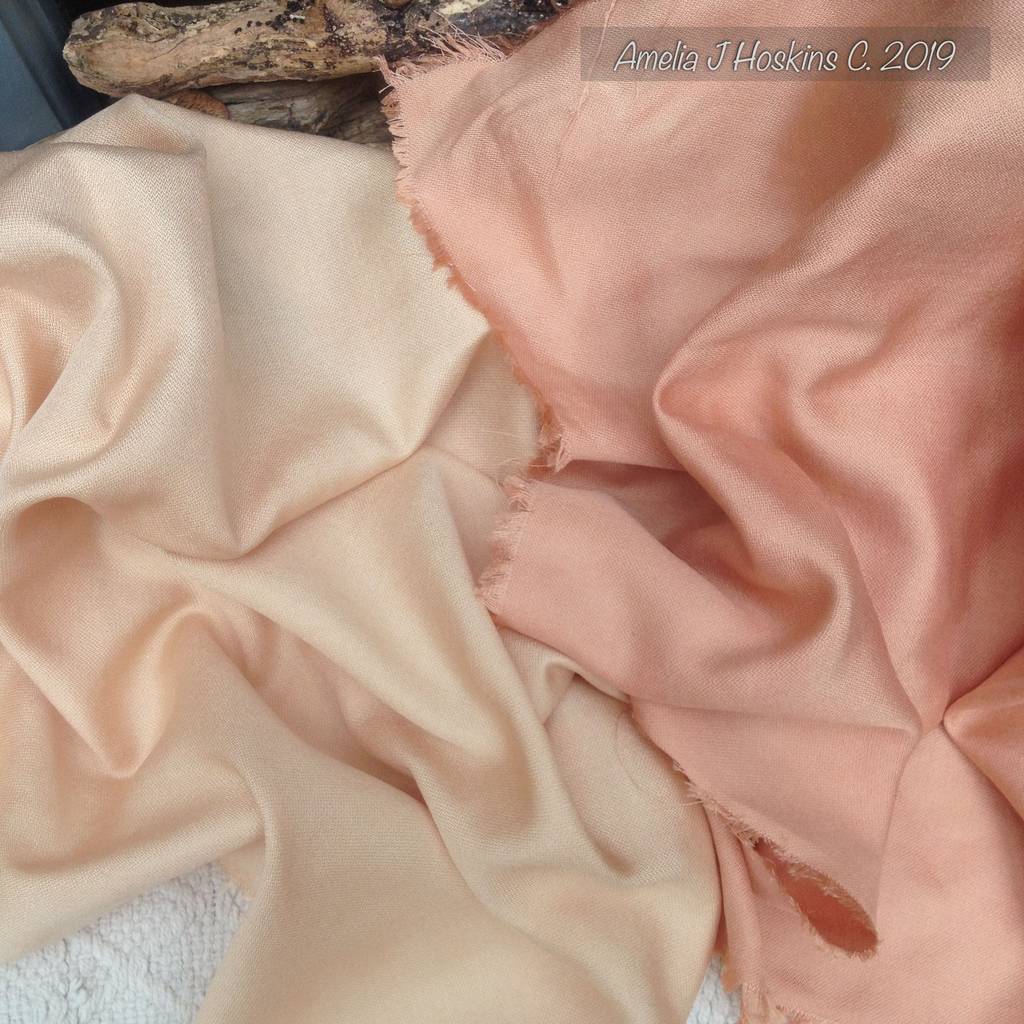
These samples will be matched with recycled fabric prints, and painted on before becoming part of a new garment; which will be added to this post in due course....

